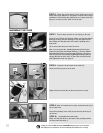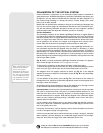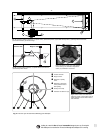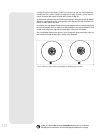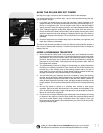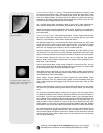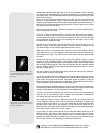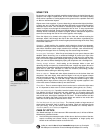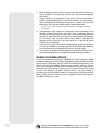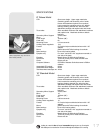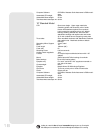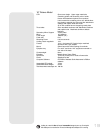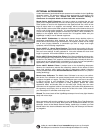
14
Looking a
t or near the
Sun will cause irreversable dama
ge to your eye.
Do not point
this telescope at or near the Sun. Do not look through the telescope as it is moving.
Probably the most memorable sight you will see in your telescope is Saturn. Although
you may not see many features on the surface of Saturn, its ring structure will steal
your breath away. You will probably be able to see a black opening in the rings, known
as the Cassini division.
Saturn is not the only planet that has rings, but it is the only set of rings that can be
seen with a small telescope. Jupiter’s rings cannot be seen from Earth at all—the
Voyager spacecraft discovered the ring after it passed Jupiter and looked back at it. It
turns out, only with the sunlight shining through them, can the rings be seen. Uranus
and Neptune also have faint rings.
Optional color filters help bring out detail and contrast of the planets. Meade offers a
line of inexpensive color filters.
What’s Next? Beyond the Solar System: Once you have observed our own system
of planets, it’s time to really travel far from home and look at stars and other objects.
You can observe thousands of stars with your telescope. At first, you may think stars
are just pinpoints of light and aren’t very interesting. But look again. There is much
information that is revealed in stars.
The first thing you will notice is that not all stars are the same colors. See if you can
find blue, orange, yellow, white and red stars. The color of stars sometimes can tell
you about the age of a star and the temperature that they burn at.
Other stars to look for are multiple stars. Very often, you can find double (or binary)
stars, stars that are very close together. These stars orbit each other. What do you
notice about these stars? Are they different colors? Does one seem brighter than
the other?
Almost all the stars you can see in the sky are part of our galaxy. A galaxy is a large
grouping of stars, containing millions or even billions of stars. Some galaxies form a
spiral (like our galaxy, the Milky Way) and other galaxies look more like a large football
and are called elliptical galaxies. There are many galaxies that are irregularly shaped
and are thought to have been pulled apart because they passed too close to—or even
through—a larger galaxy.
You may be able to see the Andromeda galaxy and several others in your telescope.
They will appear as small, fuzzy clouds.
You will also be able to see some nebulas with your scope. Nebula means cloud. Most
nebulas are clouds of gas. The two easiest to see in the Northern Hemisphere are the
Orion nebula during the winter and the Trifid nebula during the summer. These are
large clouds of gas in which new stars are being born. Some nebulas are the remains
of stars exploding.
These explosions are called supernovas.
When you become an advanced observer you can look for other types of objects such
as asteroids, planetary nebula and globular clusters. And if you’re lucky, every so often
a bright comet appears in the sky
, presenting an unforgettable sight.
The more you learn about objects in the sky, the more you will learn to appreciate the
sights you see in your telescope. Start a notebook and write down the observations
you make each night. Note the time and the date.
Use a compass to make a circle, or trace around the lid of a jar
. Draw what you see
in your eyepiece inside the circle. The best exercise for drawing is to observe the
moons of Jupiter every night or so. Try to make Jupiter and the moons approximately
the same size as they look in your eyepiece. You will see that the moons are in a
different position every night. As you get better at drawing, try more challenging sights,
like a crater system on the moon or even a nebula.
Go your library or check out the internet for more information about astronomy
. Learn
about the basics: Light years, orbits, star colors, how stars and planets are formed,
red shift, the big bang, what are the dif
ferent kinds of nebula, what are comets,
asteroids and meteors and what is a black hole. The more you learn about astronomy,
the more fun, and the more rewarding your telescope will become.
The pleiades is probably the most
striking star cluster to obser
ve in the
Nor
ther
n Hemispher
e.
M31, the Andromeda galaxy, is one
of the easiest galaxies to locate and
observe during the fall and winter
evenings.



